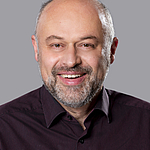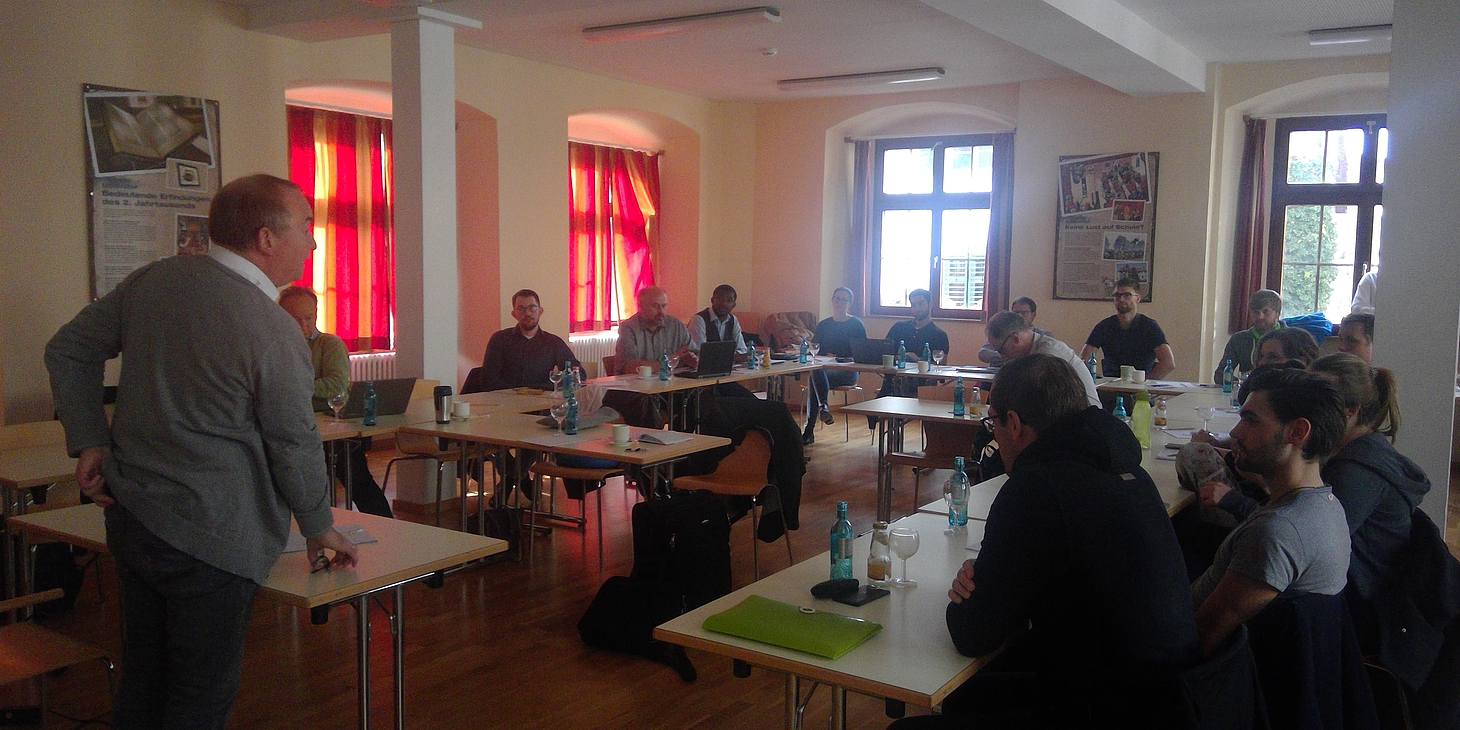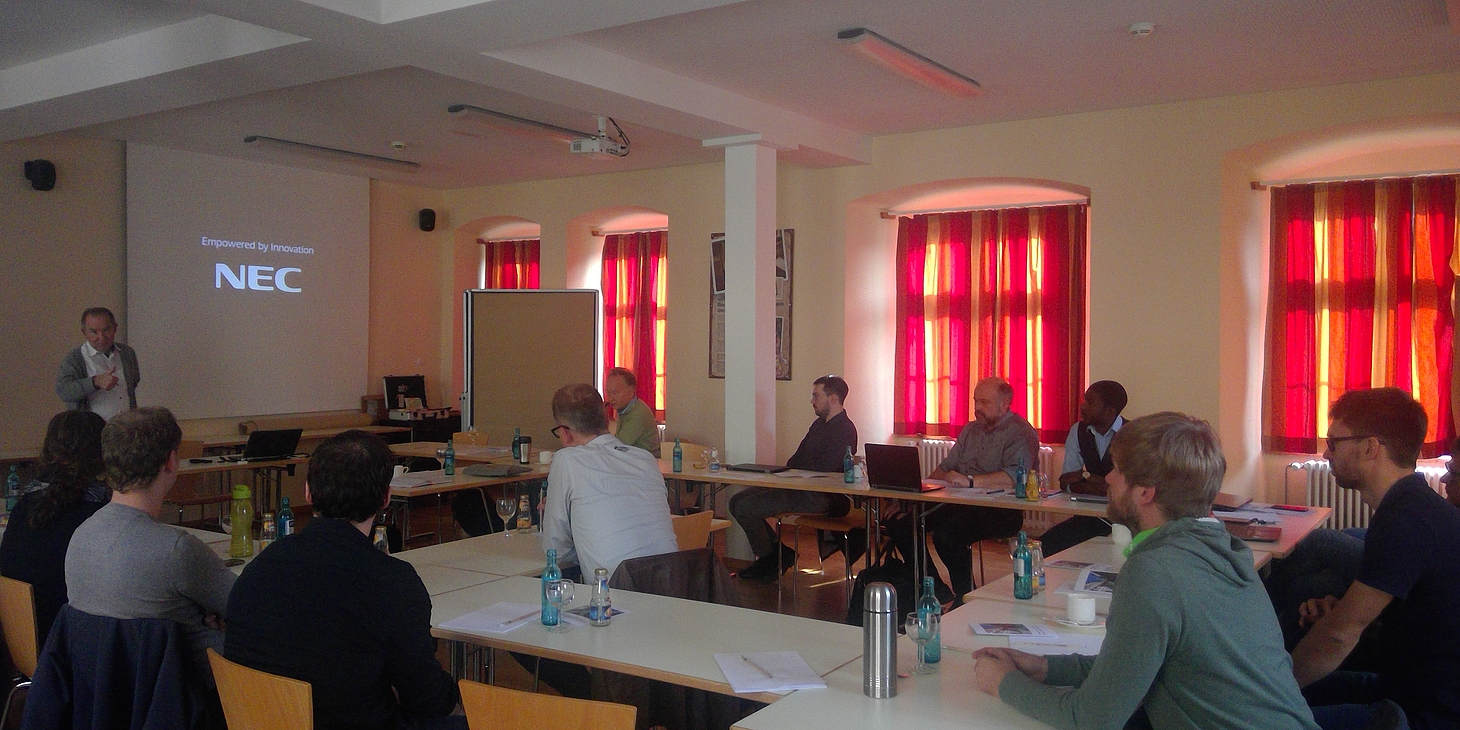Das kooperative Promotionskolleg InViTe2
Das Kooperative Promotionskolleg InViTe2 bietet Ihnen die Möglichkeit, bei uns themenspezifisch und eingebunden in eine Graduiertenorganisation zu promovieren.
Im Kooperativen Promotionskolleg 'InViTe2 - Advanced in vitro test systems for cell-chemical interactions in drug discovery and environmental safety' werden Doktorarbeiten im Rahmen eines organisierten Graduiertenkollegs durchgeführt. Das KPK InViTe2 ist ein interdisziplinärer Zusammenschluss von Forschungsteams in Konstanz und Sigmaringen, die sich mit der Entwicklung neuartiger, leistungsfähiger humaner in vitro-Testsysteme für die Prüfung pharmakologischer Wirkstoffe und toxikologisch interessanter Substanzen beschäftigen
Das vom Land Baden-Württemberg geförderte InViTe-Stipendiaten-Programm der Universität Konstanz und der Hochschule Albstadt-Sigmaringen ermöglicht zwölf interdisziplinäre, miteinander vernetzte Promotionsprojekte, die von ProfessorInnen beider Institutionen gemeinsam betreut werden. Im Fokus stehen die Entwicklung, Etablierung und Verbesserung von In-vitro-Testsystemen, die tierversuchsfreie Untersuchungen der Wechselwirkungen chemischer Substanzen mit biologischen Systemen im Rahmen der Medikamentenentwicklung, der Umweltverträglichkeit und eine REACH-Substanzprüfung ermöglichen.
List of Projects
Primary supervisors (at Sigmaringen): Prof. Dr. Jörg Bergemann & Dr. Katja Matt
Tandem supervisor (at Konstanz): Prof. Dr. Alexander Bürkle
Keywords: mitochondrial toxicity, human 8-oxoguanine DNA glycosylase, mitotropic substances, mitochondria-derived peptides, mechanisms of biological aging
Five References:
- Schniertshauer D, Gebhard D, van Beek H, Nöth V, Schon J, Bergemann J. The activity of the DNA repair enzyme hOGG1 can be directly modulated by ubiquinol. DNA Repair (Amst). 2020;87:102784. doi:10.1016/j.dnarep.2019.102784
- Matt, K. and Bergemann, J. (2019). Ex vivo Analysis of DNA Repair Capacity of Human Peripheral Blood Mononuclear Cells by a Modified Host Cell Reactivation Assay. Bio-protocol 9(15): e3325. DOI: 10.21769/BioProtoc.3325
- Schöller-Mann A, Matt K, Schniertshauer D, Hochecker B, Bergemann J. 12 days of in vivo caloric reduction can improve important parameters of aging in humans [published online ahead of print, 2020 Apr 6]. Mech Ageing Dev. 2020;188:111238. doi:10.1016/j.mad.2020.111238
- Schniertshauer D, Gebhard D, Bergemann J. Age-Dependent Loss of Mitochondrial Function in Epithelial Tissue Can Be Reversed by Coenzyme Q10. J Aging Res. 2018;2018:6354680. Published 2018 Sep 5. doi:10.1155/2018/6354680
- Yen K, Lee C, Mehta H, Cohen P. The emerging role of the mitochondrial-derived peptide humanin in stress resistance. J Mol Endocrinol. 2013 Jan 11;50(1):R11-9. doi: 10.1530/JME-12-0203 . PMID: 23239898 ; PMCID: PMC3705736
Primary supervisors (at Konstanz): Prof. Dr. Thomas Brunner and Dr. Anna Pia Plazzo
Tandem supervisor (at Sigmaringen): Prof. Dr. Stefan Schildknecht
Keywords: 3D-organoids, thiazolides, cell death, BCL-2 homologs, mitochondria, caspases, oxidative phosphorylation, proteome
Five References:
- Ripani P, Delp J, Bode K, Delgado ME, Dietrich L, Betzler VM, Yan N, von Scheven G, Mayer TU, Leist M, Brunner T. Thiazolides promote G1 cell cycle arrest in colorectal cancer cells by targeting the mitochondrial respiratory chain. Oncogene. 39:2345-2357. 2019. PMID: 31844249
- Bode KJ, Mueller S, Schweinlin M, Metzger M, Brunner T. A fast and simple fluorimetric method to detect cell death in 3D intestinal organoids. Biotechniques. 67:23-28. 2019. PMID: 31218886
- Grabinger T, Delgado ME, Brunner T. Analysis of cell death induction in intestinal organoids in vitro. Methods Mol. Biol. 2016;1419:83-93. PMID: 27108433
- Brockmann, Bluwstein, Kögel, May, Marx, Tschan, and Brunner. Thiazolides promote apoptosis in colorectal tumor cells via MAP kinase-induced Bim and Puma activation. Cell Death Dis. 2015. 6:e1778. PMID: 26043078
- Sidler D, Brockmann A, Mueller J, Nachbur U, Corazza N, Renzulli P, Hemphill A, Brunner T. Thiazolide-induced apoptosis in colorectal cancer cells is mediated via the Jun kinase-Bim axis and reveals glutathione-S-transferase P1 as Achilles’ heel. Oncogene. 31(37):4095-106. 2012. PMID: 22158036
Primary supervisors (at Konstanz): Prof. Dr. Alexander Bürkle & Dr. María Moreno-Villanueva
Tandem supervisor (at Sigmaringen): Prof. Dr. Jörg Bergemann
Keywords: DNA damage, DNA strand breaks, fluorometric detection of alkaline DNA unwinding (FADU), in-vitro testing, high-throughput screening
Five References:
- Mack M, Schweinlin K, Mirsberger N, Zubel T, Bürkle A. Automated screening for oxidative or methylation-induced DNA damage in human cells. ALTEX. 2021;38(1):63-72. PMID: 32663874
- Moreno-Villanueva M, Kramer A, Hammes T, Venegas-Carro M, Thumm P, Bürkle A, Gruber M. Influence of Acute Exercise on DNA Repair and PARP Activity before and after Irradiation in Lymphocytes from Train ed and Untrained Individuals. Int J Mol Sci. 2019 Jun 19;20(12):2999. PMID: 31248182
- Junk M, Salzwedel J, Sindlinger T, Bürkle A, Moreno-Villanueva M. Mathematical modelling of the automated FADU assay for the quantification of DNA strand breaks and their repair in human peripheral mononuclear blood cells. BMC Biophys. 2014 Sep 9;7:9. PMID: 26085926
- Moreno-Villanueva M, Eltze T, Dressler D, Bernhardt J, Hirsch C, Wick P, von Scheven G, Lex K, Bürkle A. The automated FADU-assay, a potential high-throughput in vitro method for early screening of DNA breakage. ALTEX. 2011;28(4):295-303. PMID: 22130482
- Moreno-Villanueva M, Pfeiffer R, Sindlinger T, Leake A, Müller M, Kirkwood TB, Bürkle A. A modified and automated version of the 'Fluorimetric Detection of Alkaline DNA Unwinding' method to quantify formation and repair of DNA strand breaks. BMC Biotechnol. 2009 Apr 23;9:39. PMID: 19389244
Primary supervisors (at Konstanz): Prof. Dr. Daniel Dietrich & Dr. Sascha Beneke
Tandem supervisor (at Sigmaringen): Prof. Dr. Dieter Stoll
Keywords: Organ-on-a-Chip, proteomic analyses, antibiotics resistance, in-vitro testing, low-throughput screening, mechanistic toxicology
Five References:
- Piossek F, Beneke S, Schlichenmaier N, Mucic G, Drewitz S, Dietrich DR. Physiological oxygen and co-culture with human fibroblasts facilitate in vivo-like properties in human renal proximal tubular epithelial cells. Chem Biol Interact. 2022 Jul 1;361:109959. PMID: 35533734
- Secker PF, Schlichenmaier N, Beilmann M, Deschl U, Dietrich DR. Functional transepithelial transport measurements to detect nephrotoxicity in vitro using the RPTEC/TERT1 cell line. Arch Toxicol. 2019 Jul;93(7):1965-1978. PMID: 31076804
- Bastek H, Zubel T, Stemmer K, Mangerich A, Beneke S, Dietrich DR. Comparison of Aristolochic acid I derived DNA adduct levels in human renal toxicity models. Toxicology. 2019 May 15;420:29-38. PMID: 30940547
- Secker PF, Luks L, Schlichenmaier N, Dietrich DR. RPTEC/TERT1 cells form highly differentiated tubules when cultured in a 3D matrix. ALTEX. 2018;35(2):223-234. PMID: 29197217
- Secker PF, Beneke S, Schlichenmaier N, Delp J, Gutbier S, Leist M, Dietrich DR. Canagliflozin mediated dual inhibition of mitochondrial glutamate dehydrogenase and complex I: an off-target adverse effect. Cell Death Dis. 2018 Feb 14;9(2):226. PMID: 29445145
Primary supervisor (at Sigmaringen): Prof. Dr. David Drissner
Tandem supervisor (at Konstanz): Prof. Dr. Christof Hauck
Keywords: antibiotics, antibiotic resistant bacteria, resistance genes, resistance mechanisms, plasmids, conjugation, genomics, proteomics, environment, clinical relevance
Five References:
- Gekenidis, M.-T. Walsh, F., Drissner, D. 2021. Tracing antibiotic resistance genes along the irrigation water chain to chive: Does tap or surface water make a difference? Antibiotics 2021, 10, 1100
- Remus-Emsermann M. N. P., Aicher D., Pelludat C., Gisler P., Drissner D. 2021. Conjugation dynamics of self-transmissible and mobilisable plasmids into E. coli O157:H7 on Arabidopsis thaliana rosettes. Antibiotics 2021, 10, 928
- Gekenidis M.-T., Rigotti S., Hummerjohann J., Walsh F., Drissner D. 2020. Long-term persistence of blaCTX-M-15 in soil and lettuce after introducing extended-spectrum β-lactamase (ESBL)-producing Escherichia coli via manure or water. Microorganisms 2020, 8, 1646
- Gekenidis M.-T., Kläui A., Smalla K., Drissner D. 2020. Transferable extended-spectrum-β-lactamase (ESBL) plasmids in Enterobacteriaceae from irrigation water. Microorganisms 2020, 8, 978
- Gekenidis M.-T., Qi W., Hummerjohann J., Zbinden R., Walsh F., Drissner D. 2018. Antibiotic-resistant indicator bacteria in irrigation water: High prevalence of extended-spectrum beta-lactamase (ESBL)-producing Escherichia coli. PLOS ONE. 13 (11): e0207857
Primary supervisors (at Sigmaringen): Prof. Dr. Thole Züchner & Prof. Dr. Clemens Möller
Tandem supervisor (at Konstanz): Prof. Dr. Daniel Legler & PD Dr. Annette Aichem
Keywords: high-throughput screening, assay development, laboratory automation, immunoproteasome
Five References:
- Rupp N, Peschke K, Köppl M, Drissner D, Zuchner T. Establishment of low-cost laboratory automation processes using AutoIt and 4-axis robots. (2022) SLAS Technol. 5, 312-318
- Dobslaff K, Zscharnack K, Kreisig T, Zuchner T. Rational design of a low-affinity peptide for the detection of cystatin C in a fast homogeneous immunoassay (2016) Amino Acids 48, 479-486
- Kreisig T, Hoffmann R, Zuchner T. Highly efficient förster resonance energy transfer in a fast, serum-compatible immunoassay (2013) Chembiochem. 14, 699-702
- Aichem A. Groettrup M. The ubiquitin-like modifier FAT10 – much more than a proteasome-targeting signal. J Cell Sci 133:jcs246041 (2020)
- Basler M, Groettrup M. On the role of the immunopreteasome in protein homeostasis. Cells 10:3216 (2021)
Primary supervisors (at Konstanz): Prof. Dr. Thomas Hartung, Prof. Dr. Marcel Leist
Tandem supervisor (at Sigmaringen): Prof. Dr. Clemens Möller
Keywords: Human pluripotent stem cells, brain microphysiological system, micro-glia, inflammation, neurotransmitters, in-vitro testing
Five References:
- Huang Q, Tang B, Romero JC, Yang Y, Elsayed SK, Pahapale G, Lee T-J, Pantoja IEM, Han F, Berlinicke C, Xiang T, Solazzo M, Hartung T, Qin Z, Caffo BS, Smirnova L and Gracias DH. Shell Microelectrode Arrays (MEAs) for brain organoids. Science Advances 2022, 8:eabq5031. Doi: 10.1126/sciadv.abq5031
- Pamies D, Wiersma D, Katt ME, Zhong L, Burtscher J, Harris G, Smirnova L, Searson PC, Hartung T and Hogberg H. Human organotypic brain model as a tool to study chemical-induced dopaminergic neuronal toxicity. Neurobiology of Disease, 169:105719. doi: 10.1016/j.nbd.2022.105719
- Anderson WA, Bosak A, Hogberg HT, Hartung T and Moore MJ. Advances in 3D neuronal microphysiological systems: towards a functional nervous system on a chip. In Vitro Cellular & Developmental Biology – Animal. Published online. Doi: 10.1007/s11626-020-00532-8 toxicity assessment of flame retardants using a human DNT in vitro testing battery. Cell Biol Toxicol. 2022 Oct;38(5):781-807
- Chesnut M, Paschoud H, Repond C, Smirnova L, Hartung T, Zurich M-G, Hogberg HT and Pamies D. Human 3D iPSC-derived brain model to study chemical-induced myelin disruption. International Journal of Molecular Sciences, 22:9473. doi: 10.3390/ijms22179473
- Modafferi S, Zhong X, Kleensang A, Murata Y, Fagiani F, Pamies D, Hogberg HT, Calabrese V, Lachman H, Hartung T and Smirnova L. Gene–environment interactions in developmental neurotoxicity: a case study of synergy between chlorpyrifos and CHD8 knockout in human BrainSpheres. Environmental Health Perspectives 2021, 129:77001. Doi: 10.1289/EHP8580
Primary supervisors (at Konstanz): Prof. Dr. Christof Hauck & Prof. Dr. Daniel Legler
Tandem supervisor (at Sigmaringen): Prof. Dr. Stefan Schildknecht
Keywords: innate immunity, phagocytosis, immune receptors, genetic polymorphisms, induced pluripotent stem cells
Five References:
- Goob G, Adrian J, Cossu C, Hauck CR. Phagocytosis mediated by the human granulocyte receptor CEACAM3 is limited by the receptor-type protein tyrosine phosphatase PTPRJ. J Biol Chem. 2022 Sep;298(9):102269. doi: 10.1016/j.jbc.2022.102269. PMID: 35850306.
- Bonsignore P, Kuiper JWP, Adrian J, Goob G, Hauck CR. CEACAM3-A Prim(at)e Invention for Opsonin-Independent Phagocytosis of Bacteria. Front Immunol. 2020 Feb 11; 10:3160. doi: 10.3389/fimmu.2019.03160. PMID: 32117212.
- Adrian J, Bonsignore P, Hammer S, Frickey T, Hauck CR. Adaptation to Host-Specific Bacterial Pathogens Drives Rapid Evolution of a Human Innate Immune Receptor. Curr Biol. 2019 Feb 18;29(4):616-630.e5. doi: 10.1016/j.cub.2019.01.058. PMID: 30744974.
- Hauser MA, Schaeuble K, Kindinger I, Impellizzieri D, Krueger WA, Hauck CR, Boyman O, Legler DF. Inflammation-Induced CCR7 Oligomers Form Scaffolds to Integrate Distinct Signaling Pathways for Efficient Cell Migration. Immunity. 2016 Jan 19;44(1):59-72. doi: 10.1016/j.immuni.2015.12.010. PMID: 26789922.
- Paone C, Rodrigues N, Ittner E, Santos C, Buntru A, Hauck CR. The Tyrosine Kinase Pyk2 Contributes to Complement-Mediated Phagocytosis in Murine Macrophages. J Innate Immun. 2016;8(5):437-51. doi: 10.1159/000442944. PMID: 26848986.
Primary supervisors (at Konstanz): Prof. Dr. Marcel Leist, PD Dr. Tanja Waldmann (Trenzyme GmbH)
Tandem supervisor (at Sigmaringen): Prof. Dr. Clemens Möller
Keywords: human pluripotent stem cells, pain receptors, calcium signaling, in-vitro testing, high-content screening, chemotherapeutics
Five References:
- Holzer AK, Karreman C, Suciu I, Furmanowsky LS, Wohlfarth H, Loser D, Dirks WG, Pardo González E, Leist M. Generation of Human Nociceptor-Enriched Sensory Neurons for the Study of Pain-Related Dysfunctions. Stem Cells Transl Med. 2022 Jul 20;11(7):727-741.
- Holzer AK, Suciu I, Karreman C, Goj T, Leist M. Specific Attenuation of Purinergic Signaling during Bortezomib-Induced Peripheral Neuropathy In Vitro. Int J Mol Sci. 2022 Mar 29;23(7):3734.
- Klose J, Pahl M, Bartmann K, Bendt F, Blum J, Dolde X, Förster N, Holzer AK, Hübenthal U, Keßel HE, Koch K, Masjosthusmann S, Schneider S, Stürzl LC, Woeste S, Rossi A, Covaci A, Behl M, Leist M, Tigges J, Fritsche E. Neurodevelopmental toxicity assessment of flame retardants using a human DNT in vitro testing battery. Cell Biol Toxicol. 2022 Oct;38(5):781-807.
- Loser D, Schaefer J, Danker T, Möller C, Brüll M, Suciu I, Ückert AK, Klima S, Leist M, Kraushaar U. Human neuronal signaling and communication assays to assess functional neurotoxicity. Arch Toxicol. 2021 Jan;95(1):229-252
- Karreman C, Klima S, Holzer AK, Leist M. CaFFEE: A program for evaluating time courses of Ca2+ dependent signal changes of complex cells loaded with fluorescent indicator dyes. ALTEX. 2020;37(2):332-336
Primary supervisors (at Sigmaringen): Prof. Dr. Stefan Schildknecht
Tandem supervisor (at Konstanz): Prof. Dr. Marcel Leist
Keywords: in vitro neurodegeneration, posttranslational modifications, stress response pathways, protection from neurodegeneration
Five References:
- Schildknecht S, von Kriegsheim A, Vujacic-Mirski K, Di Lisa F, Ullrich V, Daiber A. Recovery of reduced thiol groups by superoxide-mediated denitrosation of nitrosothiols. Redox Biol. 2022 Oct;56:102439. doi: 10.1016/j.redox.2022.102439
- Wijaya LS, Rau C, Braun TS, Marangoz S, Spegg V, Vlasveld M, Albrecht W, Brecklinghaus T, Kamp H, Beltman JB, Hengstler JG, van de Water B, Leist M, Schildknecht S. Stimulation of de novo glutathione synthesis by nitrofurantoin for enhanced resilience of hepatocytes. Cell Biol Toxicol. 2022 Oct;38(5):847-864.
- Schildknecht S, Pape R, Meiser J, Karreman C, Strittmatter T, Odermatt M, Cirri E, Friemel A, Ringwald M, Pasquarelli N, Ferger B, Brunner T, Marx A, Möller HM, Hiller K, Leist M. Preferential Extracellular Generation of the Active Parkinsonian Toxin MPP+ by Transporter-Independent Export of the Intermediate MPDP+. Antioxid Redox Signal. 2015 Nov 1;23(13):1001-16.
- Schildknecht S, Karreman C, Pöltl D, Efrémova L, Kullmann C, Gutbier S, Krug A, Scholz D, Gerding HR, Leist M. Generation of genetically-modified human differentiated cells for toxicological tests and the study of neurodegenerative diseases. ALTEX. 2013;30(4):427-44.
- Scholz D, Pöltl D, Genewsky A, Weng M, Waldmann T, Schildknecht S, Leist M. Rapid, complete and large-scale generation of post-mitotic neurons from the human LUHMES cell line. J Neurochem. 2011 Dec;119(5):957-71.
Primary supervisors (at Sigmaringen / NMI Reutlingen): Prof. Dr. Dieter Stoll
Tandem supervisor (at Konstanz): Prof. Dr. Christof Hauck; (at Sigmaringen): Prof. Dr. David Drissner
Keywords: proteomics of antibiotic resistance, metabolomics of antibiotic resistance, high-resolution mass spectrometry, bioinformatics
Five References:
- Kretz, R., Walter, L., Raab, N., Zeh, N., Gauges, R., Otte, K., Fischer, S., and Stoll, D. (2022) Spatial Proteomics Reveals Differences in the Cellular Architecture of Antibody-Producing CHO and Plasma Cell-Derived Cells. Mol Cell Proteomics 21, 100278
- Gramlich, M., Maier, S., Kaiser, P. D., Traenkle, B., Wagner, T. R., Voglmeir, J., Stoll, D., Rothbauer, U., and Zeck, A. (2022) A Novel PNGase Rc for Improved Protein N-Deglycosylation in Bioanalytics and Hydrogen-Deuterium Exchange Coupled With Mass Spectrometry Epitope Mapping under Challenging Conditions. Anal Chem 94, 9863-9871.
- Gekenidis, M. T., Rigotti, S., Hummerjohann, J., Walsh, F., and Drissner, D. (2020) Long-Term Persistence of bla(CTX-M-15) in Soil and Lettuce after Introducing Extended-Spectrum beta-Lactamase (ESBL)-Producing Escherichia coli via Manure or Water. Microorganisms 8
- Gramlich, M., Hays, H. C. W., Crichton, S., Kaiser, P. D., Heine, A., Schneiderhan-Marra, N., Rothbauer, U., Stoll, D., Maier, S., and Zeck, A. (2021) HDX-MS for Epitope Characterization of a Therapeutic ANTIBODY Candidate on the Calcium-Binding Protein Annexin-A1. Antibodies (Basel) 10, 12.
- Weiss, F., Schnabel, A., Planatscher, H., van den Berg, B. H., Serschnitzki, B., Nuessler, A. K., Thasler, W. E., Weiss, T. S., Reuss, M., Stoll, D., Templin, M. F., Joos, T. O., Marcus, K., and Poetz, O. (2015) Indirect protein quantification of drug-transforming enzymes using peptide group-specific immunoaffinity enrichment and mass spectrometry. Sci Rep 5, 8759
Primary supervisors (at Konstanz/BITg): Prof. Dr. Daniel Legler
Tandem supervisor (at Sigmaringen): Prof. Dr. Thole Züchner & Prof. Dr. Clemens Möller
Keywords: chemokine receptor, cell culture, cloning, FRET, assay development, in vitro test system, laboratory automation
Five References:
- Artinger M, Matti C, Gerken OJ, Veldkamp CT, Legler DF. A Versatile Toolkit for Semi-Automated Production of Fluorescent Chemokines to Study CCR7 Expression and Functions. Int J Mol Sci. 22:4158 (2021).
- Matti C, D'Uonnolo G, Artinger M, Melgrati S, Salnikov A, Thelen S, Purvanov V, Strobel TD, Spannagel L, Thelen M, Legler DF. CCL20 is a novel ligand for the scavenging atypical chemokine receptor 4. J Leukoc Biol 7:1137 (2020)
- Matti C, Salnikov A, Artinger M, D'Agostino G, Kindinger I, Uguccioni M, Thelen M, Legler DF. ACKR4 Recruits GRK3 Prior to β-Arrestins but Can Scavenge Chemokines in the Absence of β-Arrestins. Front Immunol 11:720 (2020).
- Dobslaff K, Zscharnack K, Kreisig T, Zuchner T. Rational design of a low-affinity peptide for the detection of cystatin C in a fast homogeneous immunoassay (2016)
- Kreisig T, Hoffmann R, Zuchner T. Highly efficient förster resonance energy transfer in a fast, serum-compatible immunoassay (2013) Chembiochem. 14, 699-702


Kooperatives Promotionskollge InViTe2
Ihre aktuellen Betreuer im KPK InViTe2 an der Hochschule Albstadt-Sigmaringen
Ihre aktuellen Betreuer im KPK InViTe2 an der Universität Konstanz
Forschungsschwerpunkte
Genetische Toxikologie: DNA-Schäden und DNA-Reparatur
Poly (ADP-Ribosyl)ierung
Biologische Mechanismen und Biomarker der Alterung
alexander.buerkle(at)uni-konstanz.de
Homepage
Forschungsschwerpunkte
Regulation von Zelltod in primären Zellen und Tumoren
Extra-adrenale Glucocorticoidsynthese in Darm, Lunge, Haut
Immunpathologien in Darm und Leber
Nukleäre Rezeptoren in Immunregulation und Zelltod
Forschungsschwerpunkte
Alternativmethoden zum Tierversuchsersatz
Nierentoxizität /Kanzerogene
Cyanotoxine, Kinetik und Dynamik in menschlichen Geweben
Forschungsschwerpunkte
Integrierte Teststrategien
Organotypische Zellmodelle
Pathway-Analyse aus Multi-omics-Ansätzen
Qualitätssicherung von Zellkulturen und Evidenz-basierte Toxikolog
thomas.hartung(at)uni-konstanz.de
THartung(at)jhsph.edu
Homepage
Johns Hopkins University
Bloomberg School of Public Health, CAAT
615 N. Wolfe St.
Baltimore, MD, 21205, USA
Forschungsschwerpunkte
Zelladhäsionsmoleküle
Organotypische Zellmodelle
Pathway-Analyse aus Multi-omics-Ansätzen
Qualitätssicherung von Zellkulturen und evidenzbasierte Toxikologie
Forschungsschwerpunkte
Chemokine und Chemokin-Rezeptoren (GPCRs)
Signaltransduktion, Zellmigration und Adhäsion
Adaptive Immunantwort
Tumorbiologie
Forschungsschwerpunkte
Alternativmethoden zum Tierversuchsersatz
Neurodegeneration/Neurotoxikologie
Neuroentwicklungstoxizität
Neuropharmakologie/Neuroprotektion
_____________________________________________________________________________________________________________________________________________________
InViTe 2016-2019: bisherige Projekte KPK1
Doktorand
Stefanie Klima, Master, Deutschland
Betreuer
Prof. Dr. M. Leist, Universität Konstanz
Tandembetreuer
Prof. Dr. C.Möller, Hochschule Albstadt-Sigmaringen
Doktorand
Johannes Delp, Master, Deutschland
Betreuer
Prof. Dr. T. Hartung, Universität Konstanz; Prof. Dr. M. Leist, Universität Konstanz
Tandembetreuer
Prof. Dr. J. Bergemann, Hochschule Albstadt-Sigmaringen
Doktorand
Matthias Mack, Master, Deutschland
Betreuer
Prof. Dr. A. Bürkle, Universität Konstanz
Tandembetreuer
Prof. Dr. J. Bergemann, Hochschule Albstadt-Sigmaringen
Doktorand
Konstantin Bode, Master, Deutschland
Betreuer
Prof. Dr. T. Brunner, Universität Konstanz
Tandembetreuer,
Prof. Dr. D. Stoll, Hochschule Albstadt-Sigmaringen
Doktorand
Piossek, Felicitas, Master, Deutschland
Betreuer
Prof. Dr. D. Dietrich, Universität Konstanz
Tandembetreuer,
Prof. Dr. S. Kadereit, Hochschule Albstadt-Sigmaringen
Doktorand
Clovis Seumen-Tiogang, Master, Kamerun
Betreuer
Prof. Dr. C. Hauck, Universität Konstanz; Prof. Dr. D. Legler, Universität Konstanz
Tandembetreuer
Prof. Dr. J. Bergemann, Hochschule Albstadt-Sigmaringen
Doktorand
Tobias Held, Master, Deutschland
Betreuer
Prof. Dr. M. Groettrup, Universität Konstanz
Tandembetreuer
Prof. Dr. S. Kadereit, Hochschule Albstadt-Sigmaringen
Doktorand
Dominik Loser, Master, Deutschland
Betreuer
Prof. Dr. C.Möller, Hochschule Albstadt-Sigmaringen
Tandembetreuer
Prof. Dr. M. Leist, Universität Konstanz
Doktorand
Eugenia Salzmann, Master, Deutschland
Betreuer
Prof. Dr. D. Stoll, Hochschule Albstadt-Sigmaringen
Tandembetreuer
Prof. Dr. C. Hauck, Universtität Konstanz
Doktorand
Annemaire Klatt, Master, Deutschland
Betreuer
Prof. Dr. S. Kadereit, Hochschule Albstadt-Sigmaringen
Tandembetreuer
Prof. Dr. M. Groettrup, Universität Konstanz
Doktorand
Alica Schöller-Mann, Master, Deutschland
Betreuer
Prof. Dr. J.Bergemann, Hochschule Albstadt-Sigmaringen
Tandembetreuer
Prof. Dr. A.Bürkler, Universität Konstanz
Doktorand
Daniel Schniertshauer, Master, Deutschland
Betreuer
Prof. Dr. J.Bergemann, Hochschule Albstadt-Sigmaringen
Tandembetreuer
Prof. Dr. A.Bürkle, Universität Konstanz
Doktorand
Robin Kretz, Master, Deutschland
Betreuer
Prof. Dr. D.Stoll, Hochschule Albstadt-Sigmaringen
Tandembetreuer
Prof. Dr. C. Hauck, Universität Konstanz
Doktorand
Ellinor Ade, Master, Deutschland
Betreuer
Prof. Dr. S.Kadereit, Hochschule Albstadt-Sigmaringen
Tandembetreuer
Prof. Dr. T.Brunner, Universität Konstanz
Doktorand
Larissa Walter, Master, Deutschland
Betreuer
Prof. Dr. Ch.Hauck, Universität Konstanz
Tandembetreuer
Prof. Dr. D.Stoll, Hochschule Albstadt-Sigmaringen
Doktorand
Barbara Hochecker, Master, Deutschland
Betreuer
Prof. Dr. J.Bergemann, Hochschule Albstadt-Sigmaringen
Tandembetreuer
Prof. Dr. A.Bürkle, Universität Konstanz











